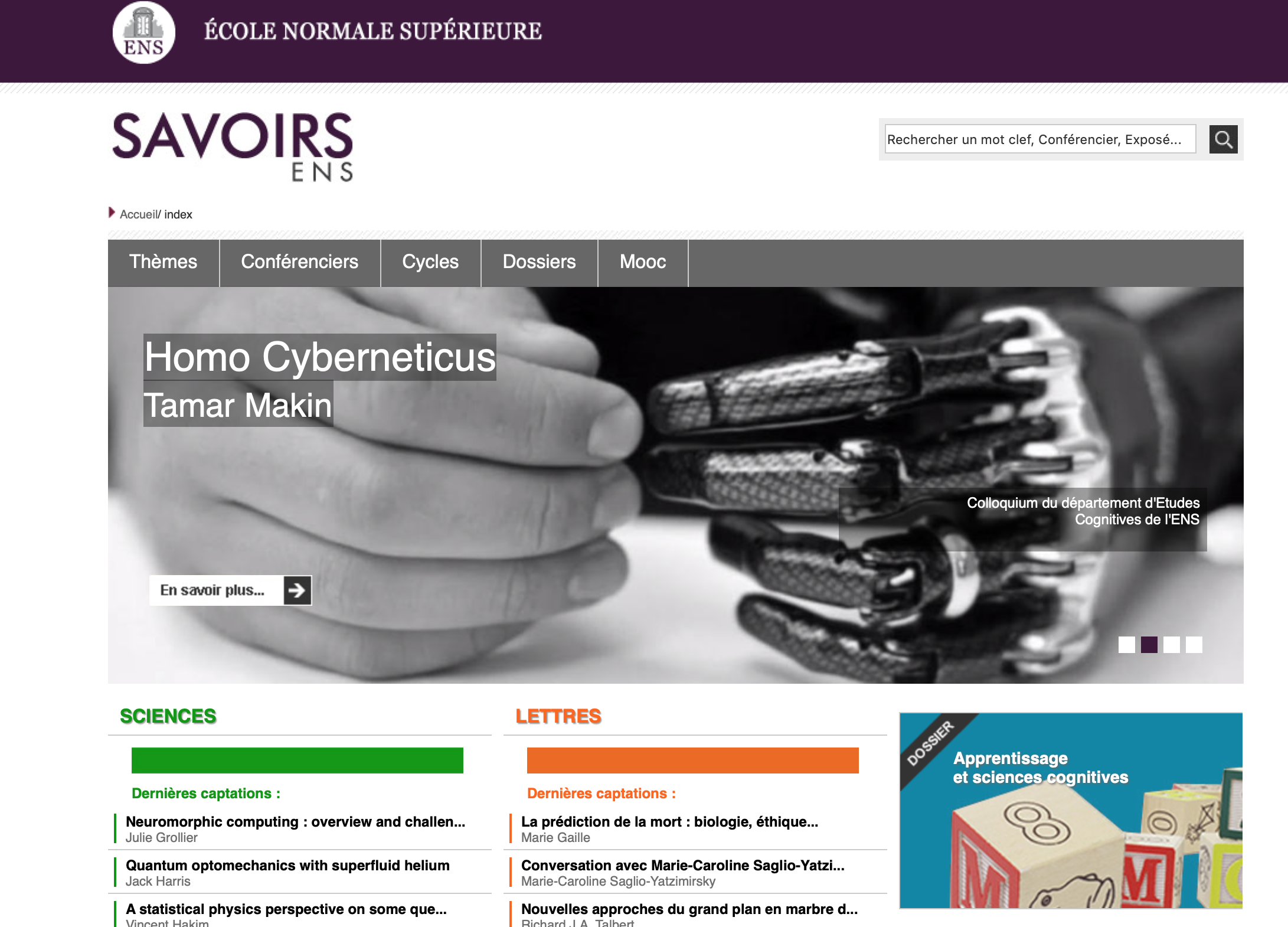COVID-19 - Confinement et déconfinement progressif au DEC
Témoignages sur une situation inédite
Matthieu Koroma, doctorant au LSCP
Doctorant au Laboratoire de Sciences Cognitives et Psycholinguistique du DEC, Matthieu Koroma a participé à des travaux sur le sommeil publiés pendant le confinement dans le journal Current Biology. Entretien avec un jeune doctorant, pour la première fois premier auteur d’une publication scientifique, et recueil de son témoignage sur son quotidien pendant le confinement et le déconfinement.
Un parcours pluridisciplinaire
Après avoir commencé des études de biologie, Matthieu Koroma intègre le Cogmaster, aujourd’hui appelé Master de sciences cognitives de PSL. "Au cours d’une première année de Master enrichissante, j’ai remarqué que le dialogue interdisciplinaire au sein des sciences cognitives nécessitait une formation initiale dans plusieurs disciplines". Il décide alors de faire une année de licence de philosophie à la Sorbonne puis réintègre le Master. "J’ai repris en deuxième année et cela m’a ouvert à des connaissances plus poussées intégrant différentes disciplines des sciences cognitives." Il s’intéresse alors plus précisément à la conscience et ses différentes formes au cours du sommeil et décide de poursuivre ses recherches sur la déconnexion du sommeil dans le cadre d’un doctorat au LSCP, au sein de l’équipe Cerveau et Conscience dirigée par Sid Kouider. "Nous cherchons à déterminer dans quelle mesure le cerveau dormant reste réceptif aux informations du monde extérieur, et si, au contraire, il se focalise sur sa propre activité, comme le rêve ou la consolidation de la mémoire, au cours de certaines phases de sommeil."
Des travaux de recherche sur le cerveau rêveur
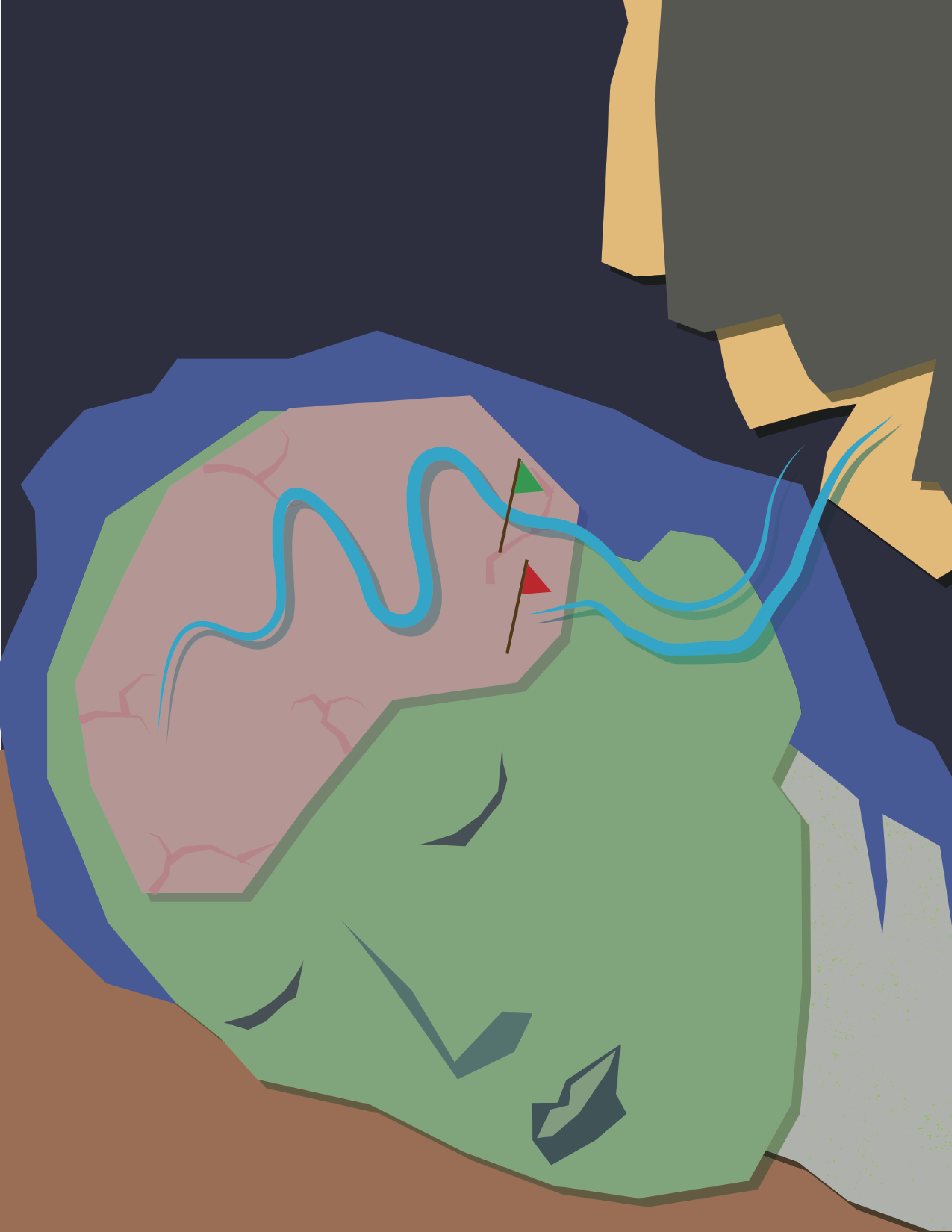 Ses travaux sur le sommeil viennent d’être publiés dans le journal Current Biology. Ils s’inscrivent dans la continuité de travaux précédents qui démontrent que le cerveau continue à écouter sélectivement certains sons de l’environnement pendant le sommeil (Legendre et al., 2019). Alors que l’étude précédente se focalisait sur le sommeil lent, le même protocole a été réalisé en sommeil paradoxal présent en fin de nuit. L'article révèle que le cerveau, lorsqu'il rêve, supprime les informations du monde extérieur qui pourraient interférer avec son activité onirique. S’il a déjà contribué à plusieurs travaux de recherche, c’est la première fois que Matthieu Koroma est premier auteur d’une publication. Ce travail est essentiel pour l’obtention du doctorat. "Les critères en termes de publications varient néanmoins en fonction des écoles doctorales et des disciplines" explique-t-il. "En effet, un résultat en neurosciences est généralement plus long à obtenir qu’un résultat en psychologie en raison d’outils méthodologiques plus complexes à manier. Au sein de notre école doctorale ("Cerveau, Cognition, Comportement"), le minimum requis est d’avoir soumis au moins un travail de recherche pour être publié dans un journal international à comité de lecture. Comme le processus de publication en lui-même peut prendre du temps et dépend en partie de facteurs indépendants de la volonté des chercheurs, la publication finale de ces travaux n’est pas forcement requise".
Ses travaux sur le sommeil viennent d’être publiés dans le journal Current Biology. Ils s’inscrivent dans la continuité de travaux précédents qui démontrent que le cerveau continue à écouter sélectivement certains sons de l’environnement pendant le sommeil (Legendre et al., 2019). Alors que l’étude précédente se focalisait sur le sommeil lent, le même protocole a été réalisé en sommeil paradoxal présent en fin de nuit. L'article révèle que le cerveau, lorsqu'il rêve, supprime les informations du monde extérieur qui pourraient interférer avec son activité onirique. S’il a déjà contribué à plusieurs travaux de recherche, c’est la première fois que Matthieu Koroma est premier auteur d’une publication. Ce travail est essentiel pour l’obtention du doctorat. "Les critères en termes de publications varient néanmoins en fonction des écoles doctorales et des disciplines" explique-t-il. "En effet, un résultat en neurosciences est généralement plus long à obtenir qu’un résultat en psychologie en raison d’outils méthodologiques plus complexes à manier. Au sein de notre école doctorale ("Cerveau, Cognition, Comportement"), le minimum requis est d’avoir soumis au moins un travail de recherche pour être publié dans un journal international à comité de lecture. Comme le processus de publication en lui-même peut prendre du temps et dépend en partie de facteurs indépendants de la volonté des chercheurs, la publication finale de ces travaux n’est pas forcement requise".
Une soutenance de thèse à distance
Matthieu Koroma a été "chanceux". Le confinement est arrivé alors qu’il rédigeait sa thèse. "Cela ne m’a donc pas affecté personnellement comme cela peut être le cas pour d’autres doctorants qui ne peuvent plus réaliser d’expériences." Il avoue cependant moins bien travailler chez lui qu’au DEC où les interactions avec d’autres chercheurs sont stimulantes. Le maintien des mesures de distanciation physique lui imposent de soutenir sa thèse en visioconférence, ce qui lui permettra, certes, d’avoir un jury international et d’augmenter la diffusion de sa soutenance, mais le privera aussi du côté cérémonial et des célébrations qui s’en suivent, habituellement.
Une situation de pandémie riche en enseignements d’un point de vue de la pratique scientifique
Avec la pandémie de COVID-19, le confinement et la sortie progressive du confinement, nous traversons une période inédite à laquelle nous avons eu peu de temps pour nous préparer. Certaines personnes semblent s’être adaptées plus facilement que d’autres. Pour Matthieu Koroma, cette situation de pandémie a été riche en enseignements d’un point de vue de la pratique scientifique, a ouvert de nouveaux horizons pour la collaboration internationale et a contribué à accroitre l’utilisation des outils numériques. "Je suis particulièrement sensible au partage des savoirs au sein de la communauté scientifique qui a été très important durant cette période et qui a été accéléré grâce aux outils issus du cadre de pensée de la science ouverte (open science)". Il ajoute qu'il s’attend à l’avenir à davantage de collaboration à chaque étape du processus scientifique, "notamment du point de vue du partage des financements, des protocoles, de la collecte de données, des outils d’analyses, et des résultats scientifiques au sein de la communauté scientifique et avec l'ensemble de la société." Engagé pour une société plus "juste", il considère aussi que cette pandémie s’inscrit dans une série d’événements climatiques et politiques fortement liés qui seront amenés à se poursuivre si le fonctionnement de notre société ne change pas.
PLUS D'INFOS
- Illustration de Laure Koroma
- Communiqué CNRS "Le cerveau rêveur se coupe du monde extérieur"
- Communiqué CNRS "Le cerveau "endormi" reste attentif à son environnement"
Camille Straboni, lab manager du DEC
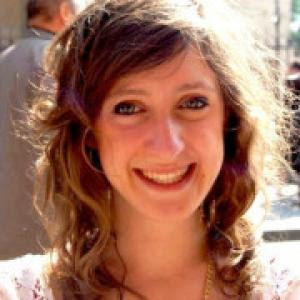 Avant de devenir lab manager de la plateforme expérimentale du DEC, Camille Straboni a étudié les neurosciences et fait de la recherche à Londres. Au DEC, elle gère la plateforme expérimentale où des expériences sont menées en sciences cognitives avec des volontaires. Elle parle de son métier et de l’impact de la crise sanitaire sur son activité.
Avant de devenir lab manager de la plateforme expérimentale du DEC, Camille Straboni a étudié les neurosciences et fait de la recherche à Londres. Au DEC, elle gère la plateforme expérimentale où des expériences sont menées en sciences cognitives avec des volontaires. Elle parle de son métier et de l’impact de la crise sanitaire sur son activité.
Support technique pour les expériences
De la gestion des rendez-vous avec les participant(e)s à la réservation des cabines de tests - elle finalise d’ailleurs la mise en place d'un système de rappel des rendez-vous par mails et sms - Camille veille aussi au bon état des cabines et gère l’achat du matériel pour la plateforme. "J’apporte aussi mon aide en amont ou en aval des expériences" ajoute-t-elle. En assurant par exemple un accompagnement dans le processus de soumission des demandes de validation des expériences par des comités d'éthiques ou la mise en place d'expériences avec de nouveaux protocoles tels que des tests à distance, en ligne ou hors site via l’utilisation de tablettes. L'amélioration des conditions d'acquisition des données expérimentales fait aussi partie de ses missions. "Nous avons eu récemment des bruits parasites pendant des acquisitions en EEG (électroencéphalographie), système qui peut être perturbé facilement par des appareillages environnants. Ma mission a été d’identifier des solutions et de les mettre en œuvre afin d’obtenir des enregistrements physiologiques de très grande qualité."
Développement de l’expérimentation en ligne
Les expériences au sein du département impliquent régulièrement de faire venir des volontaires sur site pour passer des tests dans le cadre de travaux de recherche sur des sujets aussi variés que la prise de décision, les interactions entre les viscères et le cerveau ou les interactions sociales. Les expériences consistent pour la plupart à enregistrer les réactions simultanées des participant(e)s à des stimuli visuels ou auditifs comme, par exemple, les réponses à des tests perceptifs et cognitifs, la transpiration instantanée (réponse électrodermale), la mesure du mouvement des yeux (eyetracking ou oculométrie), la mesure de l’activité cardiaque (ECG, electrocardiogramme) ou cérébrale (EEG, technique d'imagerie cérébrale non invasive), l'expression du visage au moyen de capteurs musculaires permettant de détecter un sourire, ou encore les mouvements des sourcils. Certains travaux de recherche ont pu être poursuivis grâce aux outils numériques pendant le confinement. "Nous avons acquis de nouvelles ressources, souscrits des abonnements à des plateformes de tests en ligne permettant de mener des expériences à distance. Testable et Pavlovia sont des plateformes permettant notamment de publier des expériences, recruter puis rémunérer les participant(e)s." Malgré le déconfinement, les activités expérimentales n'ont pas encore repris au département. La reprise des expériences impliquant la venue de volontaires sur site est conditionnée à la mise au point d’un protocole sanitaire rigoureux permettant de garantir la sécurité sanitaire des participants.
Camille considère qu’elle a eu beaucoup de chance pendant le confinement. "Malgré l’arrêt de nombreux travaux de recherche, cette situation a donné naissance à de nouvelles activités pour moi. J’ai pu avancer sur certains projets, en approfondir d’autres qui me tenaient à cœur, à distance, avec une plus grande concentration, dans de bonnes conditions. Je me suis trouvée finalement très occupée !" A titre plus personnel, elle ajoute que le confinement lui a permis de renforcer son amitié avec ses colocataires et de créer un véritable potager dans leur appartement parisien !
Franck Ramus, co-directeur du Master de sciences cognitives de l'Université PSL
Chercheur au Laboratoire de Sciences Cognitives et Psycholinguistique (LSCP), Franck Ramus dirige le Master de sciences cognitives (Cogmaster) de l'Université PSL avec Thérèse Collins (Université Paris Descartes). Le Cogmaster regroupe 72 étudiants.
Enseigner à distance pour assurer la continuité pédagogique
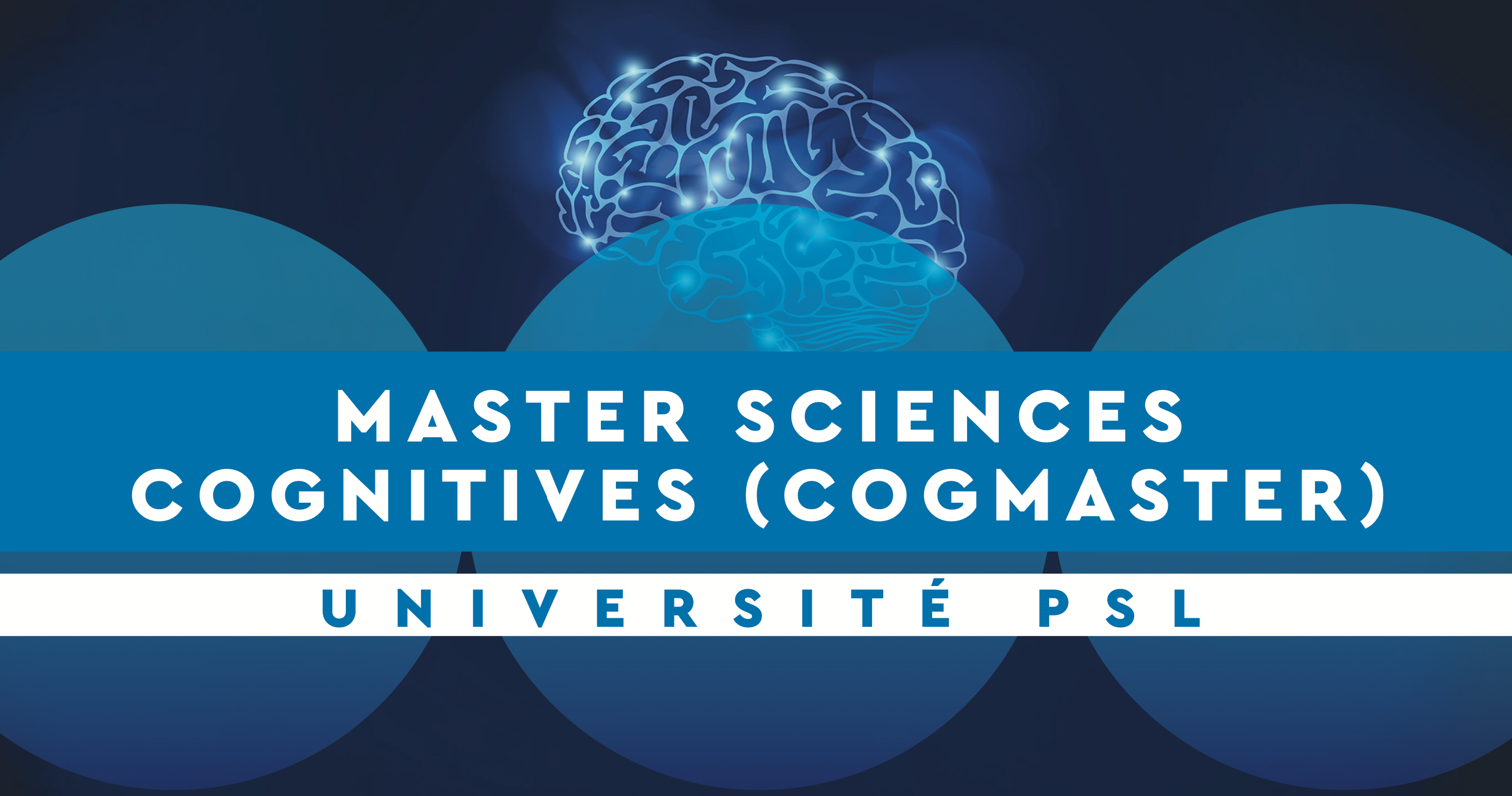 Les étudiants du Cogmaster étaient en vacances la semaine précédent le début du confinement. Franck Ramus explique que l’accélération de la propagation du Covid-19 dans le monde a alerté l’équipe pédagogique sur la nécessité de se préparer à un confinement imminent et donc à la mise en place d’un très probable enseignement à distance pour garantir la continuité des cours. La décision a été prise et communiquée aux élèves et aux enseignants dès le 11 mars, veille de l'annonce de la fermeture des écoles, six jours avant le confinement.
Les étudiants du Cogmaster étaient en vacances la semaine précédent le début du confinement. Franck Ramus explique que l’accélération de la propagation du Covid-19 dans le monde a alerté l’équipe pédagogique sur la nécessité de se préparer à un confinement imminent et donc à la mise en place d’un très probable enseignement à distance pour garantir la continuité des cours. La décision a été prise et communiquée aux élèves et aux enseignants dès le 11 mars, veille de l'annonce de la fermeture des écoles, six jours avant le confinement.
Adaptation et ajustements des pratiques
L’enjeu était de pouvoir très rapidement rassurer les étudiants quant à la continuité de l’enseignement. Des outils numériques et des solutions techniques adaptées au contexte et aux besoins spécifiques des enseignants et des élèves ont été identifiées. L’équipe pédagogique a fait un travail remarquable pour revoir les objectifs pédagogiques, la méthode, les calendriers en très peu de temps. Les stages effectués en deuxième année de master ont été aussi maintenus. Les élèves stagiaires effectuant des travaux théoriques, faisant de la modélisation, ou bien ayant récolté suffisamment de données en laboratoire avant le confinement ont pu continuer à travailler sans difficulté. Pour les autres, le contenu et les objectifs des stages ont été modifiés et adaptés à cette situation exceptionnelle.
Un retour nécessaire sur site, tout en restant prudent
Si le retour des étudiants et des enseignants dans les salles de cours et dans les laboratoires n’est pas envisagé avant le mois de septembre à l’ENS, Franck Ramus souligne l’importance, dès aujourd’hui, d’anticiper le retour éventuel de l’épidémie en prévoyant un plan de continuité pédagogique à distance en s’appuyant sur l’expérience acquise. Une consultation auprès des étudiant(e)s et des enseignants a déjà été lancée par la direction du master pour obtenir un retour sur les pratiques et outils les plus appréciés et faire le point sur les difficultés rencontrées.
Il conclut en ajoutant combien la reprise des cours sur site à l’ENS est essentielle, rappelant que la richesse de notre établissement s’est bâtie sur la fertilité des échanges entre les enseignants et les élèves, au plus près des projets de recherche et des évolutions de la science.
PLUS D'INFOS
Site internet du Master de sciences cognitives de l'Université PSL
MEDIAS
Daniel Andler : une pandémie à l’ère des technologies émergentes

"De l’intelligence collective peuvent émerger des configurations sociales inédites, adaptées aux conditions nouvelles, qu’aucun savant calcul ne pourrait produire." Daniel Andler est membre de l’Académie des sciences morales et politiques, fondateur et ancien directeur du DEC dont il est toujours un membre actif. Son édito ci-dessous a été publié le 12 mai 2020 sur le site de l’Académie des sciences morales et politiques. Lire l'edito sur academiesciencesmoralesetpolitiques.fr.
Sortir du bruit : penser notre environnement sonore de demain

Dans un entretien sur l’étude des paysages sonores naturels paru en mai dans la newsletter du DEC, Christian Lorenzi évoquait sa rencontre décisive avec Jérôme Sueur, écologue et acousticien.
Ce dernier a rédigé une tribune publiée le 11 mai sur lemonde.fr à laquelle Christian Lorenzi a participé. Il relève que "le confinement a ouvert des désirs sonores respectueux des santés humaine, animale et environnementale".
Lire l'article sur lemonde.fr.
Adios Corona, stopper la propagation du virus efficacement
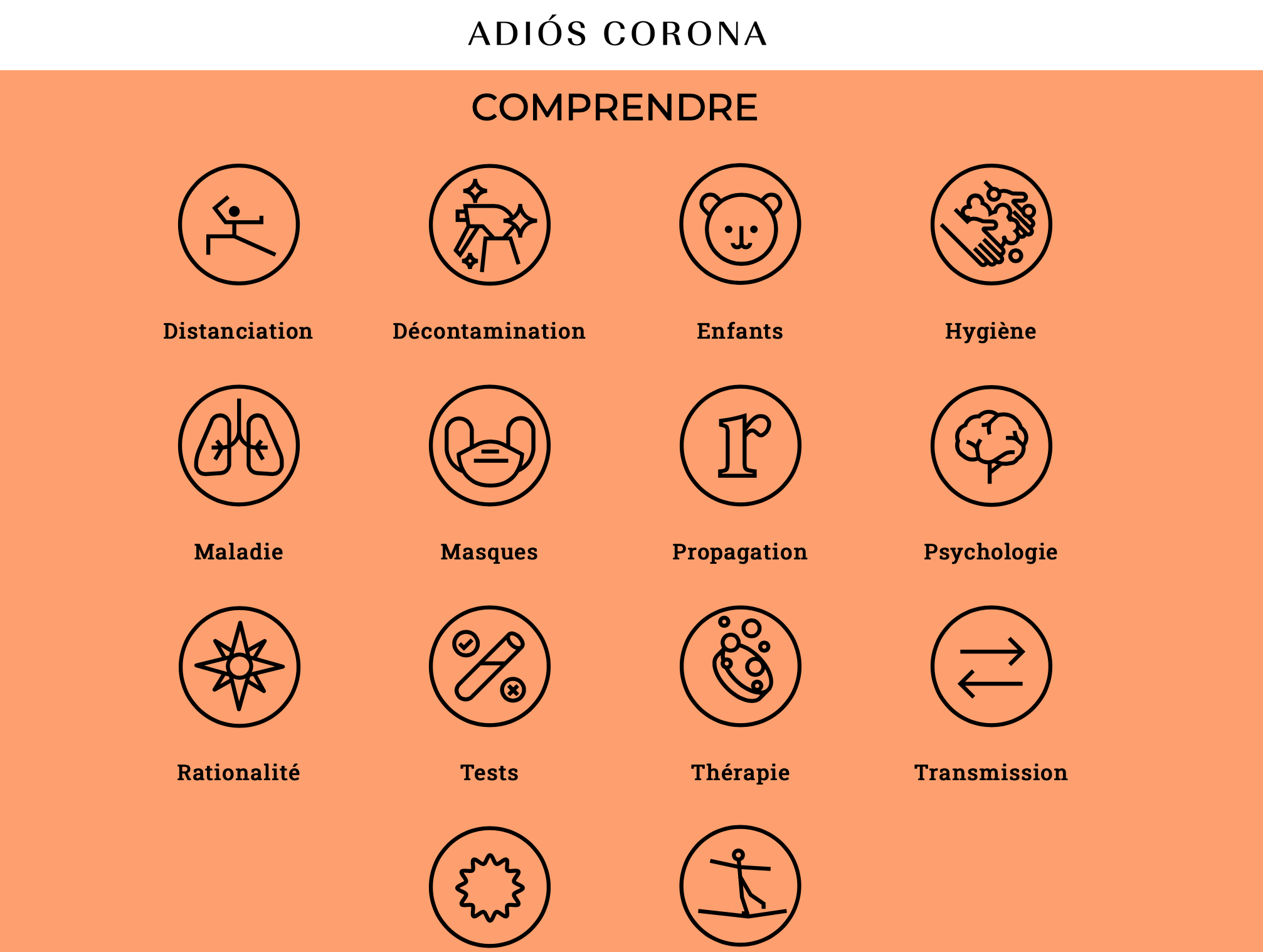
Un site internet au contenu très efficace rédigé par des scientifiques qui analysent les publications sur le COVID-19 et conseillent de bonnes pratiques collectives pour stopper la propagation du virus et revenir plus vite à une vie sociale sûre. Parmi eux, Mélusine Boon-Falleur, doctorante à l'Institut Jean Nicod et Charlotte Jacquemot, chercheuse au sein de l'équipe NeuroPsychologie Interventionnelle.
Voir le site adioscorona.org.
QUELQUES PUBLICATIONS RECENTES
Arthur Bernard, Nicolas Bredeche, Jean-Baptiste André (2020). Indirect genetic effects allow escape from the inefficient equilibrium in a coordination game. Evolution Letters, https://doi.org/10.1002/evl3.155
Résumé :
Social interactions involving coordination between individuals are subject to an “evolutionary trap.” Once a suboptimal strategy has evolved, mutants playing an alternative strategy are counterselected because they fail to coordinate with the majority. This creates a detrimental situation from which evolution cannot escape, preventing the evolution of efficient collective behaviors. Here, we study this problem using evolutionary robotics simulations. We first confirm the existence of an evolutionary trap in a simple setting. We then, however, reveal that evolution can solve this problem in a more realistic setting where individuals need to coordinate with one another. In this setting, simulated robots evolve an ability to adapt plastically their behavior to one another, as this improves the efficiency of their interaction. This ability has an unintended evolutionary consequence: a genetic mutation affecting one individual's behavior also indirectly alters their partner's behavior because the two individuals influence one another. As a consequence of this indirect genetic effect, pairs of partners can virtually change strategy together with a single mutation, and the evolutionary barrier between alternative strategies disappears. This finding reveals a general principle that could play a role in nature to smoothen the transition to efficient collective behaviors in all games with multiple equilibriums.
Bourguignon, M., Molinaro, N., Lizarazu, M., Taulu, S., Jousmäk, V., Lallier, M., Carreiras, M., De Tiège, X. (2020). Neocortical activity tracks the hierarchical linguistic structures of self-produced speech during reading aloud. NeuroImage, 26, 116788, https://doi.org/10.1016/j.neuroimage.2020.116788
Résumé :
How the human brain uses self-generated auditory information during speech production is rather unsettled. Current theories of language production consider a feedback monitoring system that monitors the auditory consequences of speech output and an internal monitoring system, which makes predictions about the auditory consequences of speech before its production. To gain novel insights into underlying neural processes, we investigated the coupling between neuromagnetic activity and the temporal envelope of the heard speech sounds (i.e., cortical tracking of speech) in a group of adults who 1) read a text aloud, 2) listened to a recording of their own speech (i.e., playback), and 3) listened to another speech recording. Reading aloud was here used as a particular form of speech production that shares various processes with natural speech. During reading aloud, the reader’s brain tracked the slow temporal fluctuations of the speech output. Specifically, auditory cortices tracked phrases (<1 Hz) but to a lesser extent than during the two speech listening conditions. Also, the tracking of words (2–4 Hz) and syllables (4–8 Hz) occurred at parietal opercula during reading aloud and at auditory cortices during listening. Directionality analyses were then used to get insights into the monitoring systems involved in the processing of self-generated auditory information. Analyses revealed that the cortical tracking of speech at <1 Hz, 2–4 Hz and 4–8 Hz is dominated by speech-to-brain directional coupling during both reading aloud and listening, i.e., the cortical tracking of speech during reading aloud mainly entails auditory feedback processing. Nevertheless, brain-to-speech directional coupling at 4–8 Hz was enhanced during reading aloud compared with listening, likely reflecting the establishment of predictions about the auditory consequences of speech before production. These data bring novel insights into how auditory verbal information is tracked by the human brain during perception and self-generation of connected speech.
Patricia Chiril, Véronique Moriceau, Farah Benamara, Alda Mari, Gloria Origgi, Marlène Coulomb-Gully. An Annotated Corpus for Sexism Detection in French Tweets. LREC 2020, pages 1397–1403, Marseille, 11–16 May 2020
Résumé :
Social media networks have become a space where users are free to relate their opinions and sentiments which may lead to a large spreading of hatred or abusive messages which have to be moderated. This paper presents the first French corpus annotated for sexism detection composed of about 12,000 tweets. In a context of offensive content mediation on social media now regulated by European laws, we think that it is important to be able to detect automatically not only sexist content but also to identify if a message with a sexist content is really sexist (i.e. addressed to a woman or describing a woman or women in general) or is a story of sexism experienced by a woman. This point is the novelty of our annotation scheme. We also propose some preliminary results for sexism detection obtained with a deep learning approach. Our experiments show encouraging results.
Koroma M, Lacaux C, Andrillon T, Legendre G, Léger D, Kouider S (2020). Sleepers Selectively Suppress Informative Inputs during Rapid Eye Movements. Current Biology, S0960-9822(20)30561-3, doi:10.1016/j.cub.2020.04.047
Résumé :
Sleep leads to a disconnection from the external world. Even when sleepers regain consciousness during rapid eye movement (REM) sleep, little, if any, external information is incorporated into dream content [1-3]. While gating mechanisms might be at play to avoid interference on dreaming activity [4], a total disconnection from an ever-changing environment may prevent the sleeper from promptly responding to informative events (e.g., threat signals). In fact, a whole range of neural responses to external events turns out to be preserved during REM sleep [5-9]. Thus, it remains unclear whether external inputs are either processed or, conversely, gated during REM sleep. One way to resolve this issue is to consider the specific impact of eye movements (EMs) characterizing REM sleep. EMs are a reliable predictor of reporting a dream upon awakening [10, 11], and their absence is associated with a lower arousal threshold to external stimuli [12]. We thus hypothesized that the presence of EMs would selectively prevent the processing of informative stimuli, whereas periods of REM sleep devoid of EMs would be associated with the monitoring of external signals. By reconstructing speech in a multi-talker environment from electrophysiological responses, we show that informative speech is amplified over meaningless speech during REM sleep. Yet, at the precise timing of EMs, informative speech is, on the contrary, selectively suppressed. These results demonstrate the flexible amplification and suppression of sensory information during REM sleep and reveal the impact of EMs on the selective gating of informative stimuli during sleep.
Diego Kozlowski, Elisa Lannelongue, Frédéric Saudemont, Farah Benamara, Alda Mari, Véronique Moriceau, Abdelmoumen Boumadanea (2020). A three-level classification of French tweets in ecological crises. Information Processing & Management, Volume 57, Issue 5, https://doi.org/10.1016/j.ipm.2020.102284
Résumé :
The possibilities that emerge from micro-blogging generated content for crisis-related situations make automatic crisis management using natural language processing techniques a hot research topic. Our aim here is to contribute to this line of research focusing for the first time on French tweets related to ecological crises in order to support the French Civil Security and Crisis Management Department to provide immediate feedback on the expectations of the populations involved in the crisis. We propose a new dataset manually annotated according to three dimensions: relatedness, urgency and intentions to act. We then experiment with binary classification (useful vs. non useful), three-class (non useful vs. urgent vs. non urgent) and multiclass classification (i.e., intention to act categories) relying on traditional feature-based machine learning using both state of the art and new features. We also explore several deep learning models trained with pre-trained word embeddings as well as contextual embeddings. We then investigate three transfer learning strategies to adapt these models to the crisis domain. We finally experiment with multi-input architectures by incorporating different metadata extra-features to the network. Our deep models, evaluated in random sampling, out-of-event and out-of-type configurations, show very good performances outperforming several competitive baselines. Our results define the first contribution to the field of crisis management in French social media.
Najar, A., Sigaud, O. & Chetouani , M. (2020). Interactively shaping robot behaviour with unlabeled human instructions. Auton Agent Multi-Agent Syst, 34 (35). doi:10.1007/s10458-020-09459-6
Résumé :
In this paper, we propose a framework that enables a human teacher to shape a robot behaviour by interactively providing it with unlabeled instructions. We ground the meaning of instruction signals in the task-learning process, and use them simultaneously for guiding the latter. We implement our framework as a modular architecture, named TICS (Task-Instruction-Contingency-Shaping) that combines different information sources: a predefined reward function, human evaluative feedback and unlabeled instructions. This approach provides a novel perspective for robotic task learning that lies between Reinforcement Learning and Supervised Learning paradigms. We evaluate our framework both in simulation and with a real robot. The experimental results demonstrate the effectiveness of our framework in accelerating the task-learning process and in reducing the number of required teaching signals.
Nathan Peiffer-Smadja, Redwan Maatoug, François-Xavier Lescure, Eric D’Ortenzio, Joëlle Pineau & Jean-Rémi King (2020). Machine Learning for COVID-19 needs global collaboration and data-sharing. Nature Machine Intelligence, https://doi.org/10.1038/s42256-020-0181-6
Résumé :
The COVID-19 pandemic poses a historical challenge to society. The profusion of data requires machine learning to improve and accelerate COVID-19 diagnosis, prognosis and treatment. However, a global and open approach is necessary to avoid pitfalls in these applications.
Radtke-Schuller, S., Town, S.M., Yin, P., Elgudea, D., Schuller, G., K. Bizley, J., Shamma, S.& B. Fritz, J. (2020). Dorsal prefrontal and premotor cortex of the ferret as defined by distinctive patterns of thalamo-cortical projections. Brain Structure and Function. https://doi.org/10.1007/s00429-020-02086-7
Résumé :
Recent studies of the neurobiology of the dorsal frontal cortex (FC) of the ferret have illuminated its key role in the attention network, top-down cognitive control of sensory processing, and goal directed behavior. To elucidate the neuroanatomical regions of the dorsal FC, and delineate the boundary between premotor cortex (PMC) and dorsal prefrontal cortex (dPFC), we placed retrograde tracers in adult ferret dorsal FC anterior to primary motor cortex and analyzed thalamo-cortical connectivity. Cyto- and myeloarchitectural differences across dorsal FC and the distinctive projection patterns from thalamic nuclei, especially from the subnuclei of the medial dorsal (MD) nucleus and the ventral thalamic nuclear group, make it possible to clearly differentiate three separate dorsal FC fields anterior to primary motor cortex: polar dPFC (dPFCpol), dPFC, and PMC. Based on the thalamic connectivity, there is a striking similarity of the ferret’s dorsal FC fields with other species. This possible homology opens up new questions for future comparative neuroanatomical and functional studies.
Souffi, S., Lorenzi, C., Varnet, L. & Edeline, J. (2020). Noise-sensitive but more precise subcortical representations co-exist with robust cortical encoding of natural vocalizations. Journal of Neuroscience, 2731, 19. doi:10.1523/JNEUROSCI.2731-19.2020
Résumé :
Humans and animals maintain accurate sound discrimination in the presence of loud sources of background noise. It is commonly assumed that this ability relies on the robustness of auditory cortex responses. However, only a few attempts have been made to characterize neural discrimination of communication sounds masked by noise at each stage of the auditory system and to quantify the noise effects on the neuronal discrimination in terms of alterations in amplitude modulations. Here, we measured neural discrimination between communication sounds masked by a vocalization-shaped stationary noise from multiunit responses recorded in the cochlear nucleus, inferior colliculus, auditory thalamus, primary and secondary auditory cortex at several signal-to-noise ratios (SNR) in anesthetized male or female guinea pigs. Masking noise decreased sound discrimination of neuronal populations in each auditory structure, but collicular and thalamic populations showed better performance than cortical populations at each SNR. In contrast, in each auditory structure, discrimination by neuronal populations was slightly decreased when tone-vocoded vocalizations were tested. These results shed new light on the specific contributions of subcortical structures to robust sound encoding, and suggest that the distortion of slow amplitude modulation cues conveyed by communication sounds is one of the factors constraining the neuronal discrimination in subcortical and cortical levels.
Pablo Fernández Velasco & Roberto Casati (2020). Subjective disorientation as a metacognitive feeling. Spatial Cognition & Computation, 1-25, DOI: 10.1080/13875868.2020.1768395
Résumé :
There is a large body of literature on disorientation, ranging from behavioral studies to the analysis of search and rescue operations. However, the subjective side of disorientation remains insufficiently explored and, as a result, there is no unified account of the phenomenon. A working characterization of disorientation is a first step in the direction of this unified account. Through the study of an array of subjective experiences of disorientation, we shall first distinguish between the objective condition of being lost and the subjective condition of disorientation. Our central claim is then that disorientation is a metacognitive feeling. Specifically, we claim that disorientation is a metacognitive feeling of low confidence in the subject’s online system of spatial representation.
X. Wang, J. Du, A. Cristia, L. Sun and C. Lee. "A Study of Child Speech Extraction Using Joint Speech Enhancement and Separation in Realistic Conditions", ICASSP 2020 - 2020 IEEE International Conference on Acoustics, Speech and Signal Processing (ICASSP), Barcelona, Spain, 2020, pp. 7304-7308, doi: 10.1109/ICASSP40776.2020.9053875.
Résumé :
In this paper, we design a novel joint framework of speech enhancement and speech separation for child speech extraction in realistic conditions, targeting the problem of extracting child speech from daily conversations in BabyTrain mega corpus. To the best of our knowledge, it is the first discussion of a feasible method for child speech extraction in realistic conditions. First, we make detailed analysis of the BabyTrain mega corpus, which is recorded in adverse environments. We observe problems of background noises, reverberations and child speech that is partially obscured by adult speech (for instance due to speaker overlap but also imitation by the adult). Motivated by this, we conduct a joint framework of speech enhancement and speech separation for child speech extraction. To measure the extraction results in realistic conditions, we propose several objective measurements to evaluate the performance of the our system, which is different from those commonly used for simulation data. Compared with the unprocessed approach and classification approach, our proposed approach can yield the best performance among all subsets of BabyTrain.
Nicolai Wolpert, Ignacio Rebollo, Catherine Tallon‐Baudry (2020). Electrogastrography for psychophysiological research: Practical considerations, analysis pipeline, and normative data in a large sample. Psychophysioloy. https://doi.org/10.1111/psyp.13599
Résumé :
Electrogastrography (EGG) is the noninvasive electrophysiological technique used to record gastric electrical activity by means of cutaneous electrodes placed on the abdomen. EGG has been so far mostly used in clinical studies in gastroenterology, but it represents an attractive method to study brain‐viscera interactions in psychophysiology. Compared to the literature on electrocardiography for instance, where practical recommendations and normative data are abundant, the literature on EGG in humans remains scarce. The aim of this article is threefold. First, we review the existing literature on the physiological basis of the EGG, pathways of brain‐stomach interactions, and experimental findings in the cognitive neuroscience and psychophysiology literature. We then describe practical issues faced when recording the EGG in young healthy participants, from data acquisition to data analysis, and propose a semi‐automated analysis pipeline together with associated MATLAB code. The analysis pipeline aims at identifying a regular rhythm that can be safely attributed to the stomach, through multiple steps. Finally, we apply these recording and analysis procedures in a large sample (N = 117) of healthy young adult male and female participants in a moderate (<5 hr) to prolonged (>10 hr) fasting state to establish the normative distribution of several EGG parameters. Our results are overall congruent with the clinical gastroenterology literature, but suggest using an electrode coverage extending to lower abdominal locations than current clinical guidelines. Our results indicate a marginal difference in EGG peak frequency between male and female participants, and that the gastric rhythm becomes more irregular after prolonged fasting.
Yesilaltay , S., Majima, Y. & Mercier, H. (2020). It's my idea! Reputation management and idea appropriation. Evolution and Human Behavior, 41(3), 235-243. doi:10.1016/j.evolhumbehav.2020.03.004
Résumé :
Accurately assessing others' reputation, and developing a reputation as a competent, honest, fair individual—a good epistemic and moral reputation—are critical skills. In six online experiments (N = 2811), replicated with English and Japanese participants, we found that one way to improve our epistemic reputation is to display our competence by sharing valuable ideas, especially if we appropriate these ideas—i.e. present them as being our own, and not someone else's, whether that is the case or not (H1). But idea appropriation also entails some risks, otherwise it would lose its quality as a reliable signal. In particular, appropriating a bad idea damages one's epistemic reputation (H2), and being caught appropriating someone else's idea damages one's moral reputation (H3). As a consequence, people are more likely to appropriate good ideas when they are motivated to display their competence (H4), and less likely to do so when the odds of getting caught increase (H5). The way people negotiate the tradeoffs of reputation management as they communicate can help explain the spread of information, as well as misinformation.
AGENDA
Les événements du DEC ont repris, virtuellement ! Consultez l'agenda sur cognition.ens.fr.
Retrouvez certaines de nos conférences en accès libre sur le site des Savoirs de l'ENS (Colloquium du DEC, la Semaine du Cerveau) et sur la chaîne youtube de l'école (conférences grand public, Semaine du Cerveau, Nuits de l'ENS etc.)
